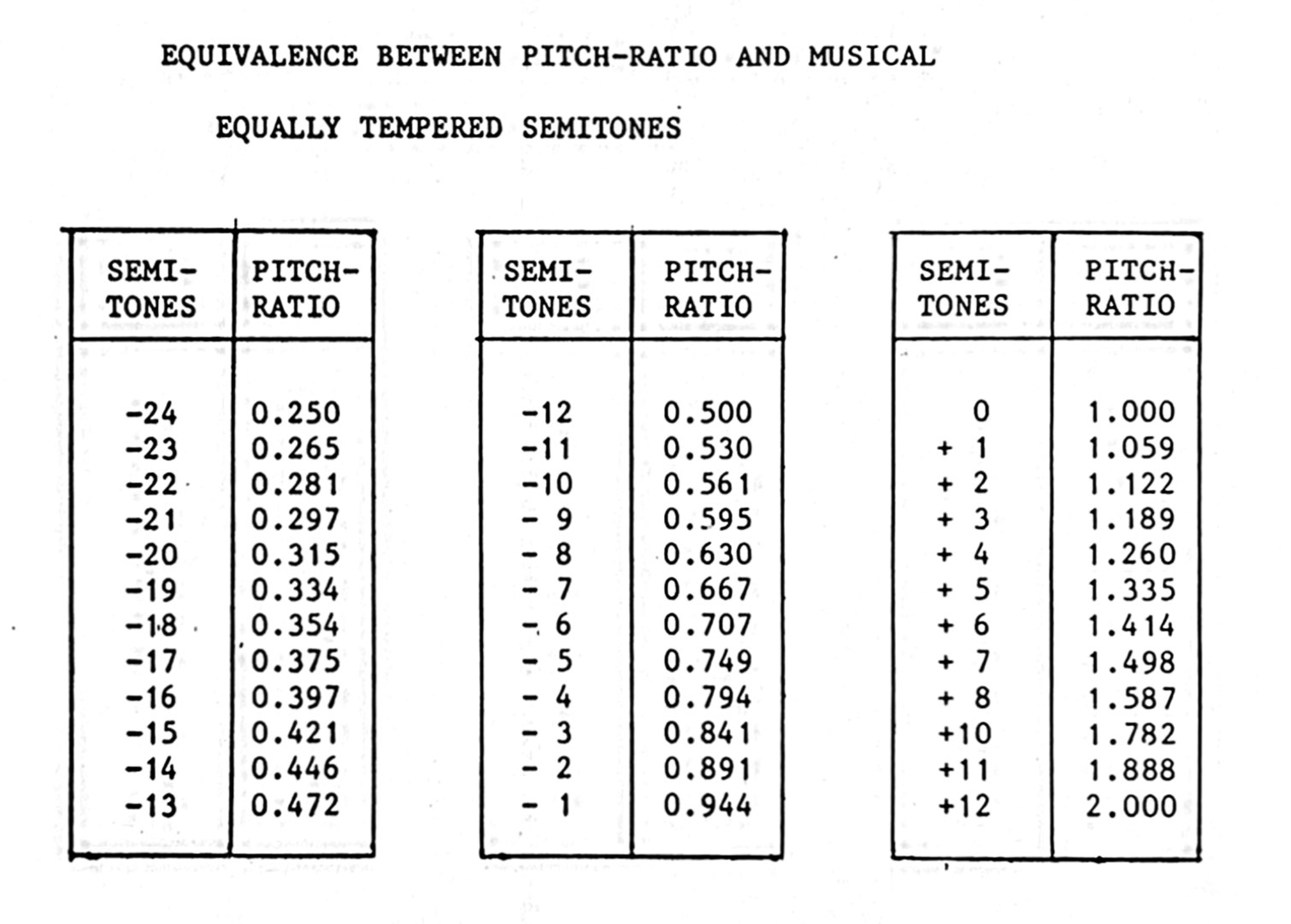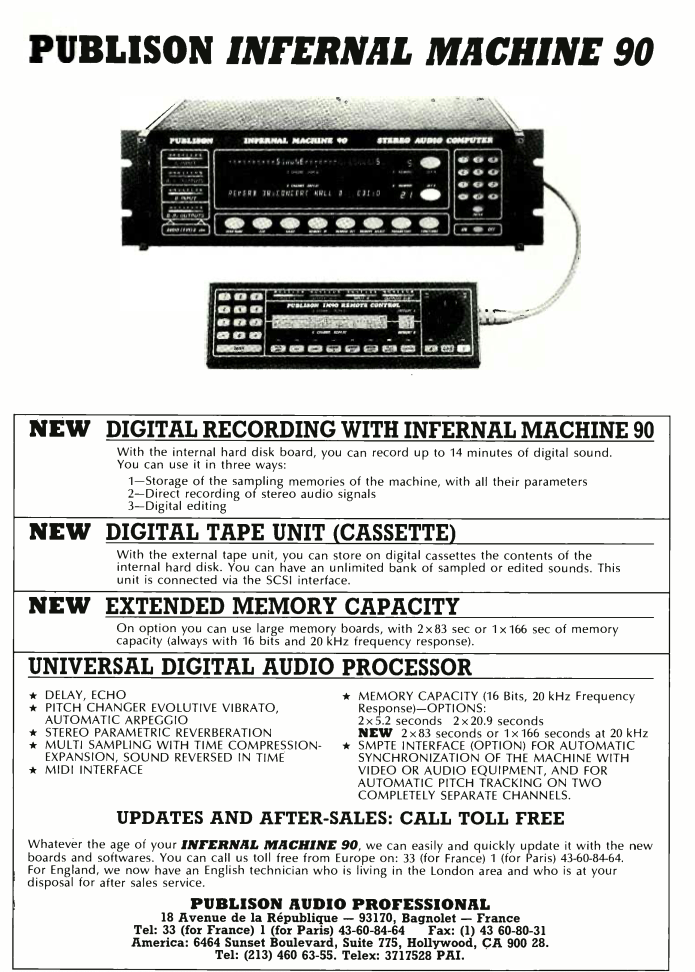The Publison Infernal Machine 90: Agent Provocateur of Innovation and Sound Exploration
10mins read • Bryan Clark

Jump To Section
The Publison Infernal Machine 90: Agent Provocateur of Innovation and Sound Exploration

“Hello. I am the Infernal Machine 90. Thank you for working with me.”
In the world of audio production and sound processing, few devices enjoy “secret weapon” status as much as the Publison Infernal Machine 90 (aka IM90). Obscure and extremely rare, it is a legendary piece of equipment that has left a profound impact on the music industry.
Created in 1984 by Publison, a French company based in Paris, the Infernal Machine 90 sprang forth from the ingenious maverick inventor Peter Dean. The unit remained in production for only five years (until 1989) when the company pivoted and started making some of the very first DAWs and specialized mixing desks geared firmly towards video post production users.
The Infernal Machine became an indispensable tool for sound designers working in film, television, and video games. It allowed them to craft intricate and otherworldly sound effects, adding depth and realism to audiovisual experiences.
I’m going to pay homage to the IM90, dive deep into the history, features, influence, and how it still conjures respect, admiration, and a sense of unicorn-like mystery among artists, producers, and engineers around the world.
Bring The Heat!
Even though the IM90 emerged during the early days of digital audio processing, it revolutionized the possibilities of sound manipulation and experimentation. It quickly became the go-to effects, sampler, and loop creator for a wide range of artists including Prince, Brian Eno, Pink Floyd, Frank Zappa, Ministry, LL Cool J, Run DMC, Rick Astley, and Tangerine Dream to name a few.
The Infernal Machine’s eye-catching front panel consisted of three sections: vertical LED input/output dB metering readouts for both A and B channels, two long independent LCD readout strips for each channel with 8 red oval multifunction membrane selector pads below, and finally a numerical data entry keypad on the right. For all intents and purposes, it was truly a stereo audio computer.
The IM90 is one of the earliest examples of a stereo (2 in / 4 out) digital multi-effects processor that was capable of processing left and right channels independently with completely different effects and can be adjusted in real time. In fact, this is one of my favorite ways to run the unit by using a stereo send and processing the audio with various echo settings on one channel and reverb or pitch shifting on the other channel.
Reverbs Galore
There are 52 reverb presets that are wide ranging: spring, plate, bath-room, tube, cask, cellar, concert hall, church, cathedral, sound hoarder, and more. Each type of reverb can be adjusted by size, decay, predelay, attenuation, low and high frequency decay time, three separately adjustable primary reflections, and the ability to make the diffusions stereo or mono. The size of each reverbs are adjusted in cubic meters that range from 1 to 1,000,000 and the decay time can range from .1 to 200 seconds.
The reverb predelay can be adjusted from 1ms and 999ms and the mix level of the reverb (“Attenuation”) can range from 0 to 99dB in steps of 1dB.
Stellar Pitch Shifting
In addition to the extensive, programmable reverbs, echos, and delays, the IM90 also has one of the best pitch shifting algorithms in the business – even by 2023 standards – and has a range of 2 octaves below to one octave above. What takes a bit of getting used to is how the pitch-ratio is expressed. Unlike modern pitch shifting algorithms, the IM90 uses pitch ratios instead of semitones. For example, a pitch ratio of .250 equates to -24 semitones while 1.335 equals +5 semitones.

Sample This...
The IM90 was equally renown as a cutting edge sampler and in fact became the sampler of choice for creating loops due to it’s fidelity and editing capabilities. It still gob smacks me to know that the Infernal Machine used just a single chip for all digital signal processing (DSP) technology as well an stellar ability to processes stereo input signals at 50kHz with 16 bit resolution – higher than Red Book standard consumer audio CDs (the cutting edge audio format at the time) which were locked at 44.1kHz/16bit. This allowed the unit to have a +90dB range and a top end frequency sampling range of 20kHz.
The speed of the pitch shift can also be adjusted from .500 (twice as long as the original) to 2.00 (half as long as the original). This is a very unique feature of this unit as it allows for time compression and expansion!
it was also equally used as a sampler with a single chip for all digital signal processing (DSP) technology. The IM90 could processes stereo input signals at 50kHz with 16 bit resolution – higher than Red Book standard consumer audio CDs (the cutting edge audio format at the time) which were locked at 44.1kHz/16bit. This allowed the unit to have a +90dB range and a top end frequency sampling range of 20kHz.
Compared with other samplers of the day, the IM90 far outpaced its competitors. The AMS DMX maxed out at 15bit sampling using only one stereo sample at a time and other samplers by Fairlight and Emulator ranged from 8 to12 bit and were mono. The Infernal Machine’s sampling times could range between 5.2 and 20.9 seconds per channel, divided up into 99 samples at full frequency range! The only thing that could come close was the 16 voice/16 bit Synclavier PSMT but few could shoulder the colossal weight of the $200,000 price tag ($585,976 today). In addition, Infernal Machines equipped with SMPTE upgrades, allowed users to loop, edit, and trigger their samples via MIDI.
Echo, Echo, Echo
The Delay in the IM90 is broken up into two distinct programmable sections – “Delay” and “Echo” – and is where the unit feels decidedly French to me. Rather than folding all of the programmable functions into the Delay section, only the delay time can be adjusted in the Delay mode. In the Echo function, you can adjust the “Loop” time as well as the amount of “Feedback” generated. I like to think of it as if I was creating an old school tape loop (but digitally) and then having the option of specifying the amount of feedback for that loop as it plays. The Delay time ranges from .02ms to 546.25ms, Loop times are from .04ms to 200sec, and Feedback is ratio based from 0%-99%.
Influence on Music Production

The Infernal Machine offered an impressive collection of effects, ranging from standard audio processing tools like reverb, delay, and chorus to more exotic and unique effects such as granular synthesis, pitch shifting, and spectral processing. With the amount of programmability and automation it was unlike any of its analog counterparts. IM90 users could save and recall presets, making it easier to reproduce specific effects or configurations and iit could be integrated into existing studio setups and controlled via MIDI, enabling automation and synchronization with other MIDI-compatible equipment.
Is There a Plugin Version?
Sadly, no. But many contemporary software plugins and hardware effects units draw inspiration from the Infernal Machine’s unique features and algorithms and companies like Eventide, TC Electronic, Strymon, and FabFilter among others, continue to innovate and build on this tradition of early digital delays. I find it a little odd and lacking that most of the classic, early digital delays have been modeled and turned into a plugin version, but no love has been shown for the IM90. Perhaps someday that will change.
Regardless, the Publison Infernal Machine 90 remains an enduring symbol of innovation and creativity in the world of audio production. Its ability to explore new sound territories and expand the horizons of music production made it an iconic piece of equipment that left an indelible mark on the music industry.


